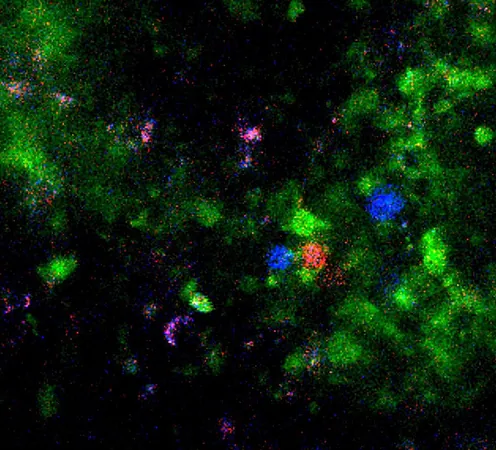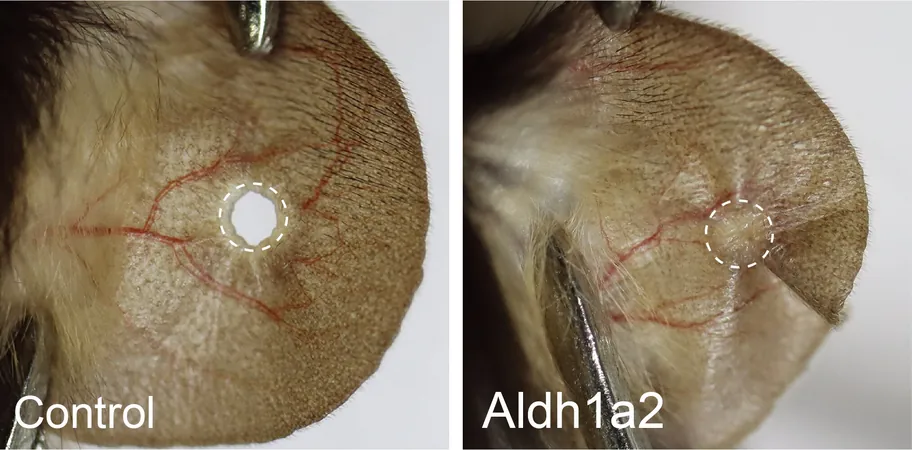
Unlocking the Mystery of Food Allergies: How our Immune System Creates a 'Tolerance Network' to Keep Us Safe
2025-05-29
Author: Ming
The Hidden Power of Oral Tolerance
When it comes to food allergies, our instinct is often to take aim at our immune systems. Yet, when we indulge in a diverse diet without any issues, it's still our immune system at work, thanks to a fascinating mechanism known as oral tolerance. This vital process allows our bodies to enjoy everything from steak to strawberries without treating them as enemies— a concept that researchers have struggled to fully understand until now.
A Groundbreaking Study Reveals the Cellular Network Behind Food Tolerance
A groundbreaking study published in *Nature* by Dr. Ranit Kedmi's team at the Weizmann Institute of Science has begun to untangle this long-standing puzzle. Their research illuminates the intricate cellular network responsible for oral tolerance, providing insight into why some people suffer from food allergies, celiac disease, and other sensitivities.
The Journey of Tolerance Begins in the Womb
The development of food tolerance starts in the womb, where the immune system of a fetus first interacts with food-derived substances from the mother’s diet. This process continues through breastfeeding and the introduction of solid foods, as gut bacteria play a crucial role in training the immune system to recognize safe substances.
The Role of Dendritic Cells—And a Surprising New Player
For years, scientists believed that a specific type of immune cell, called dendritic cells, were the key orchestrators of food tolerance. These cells, awarded the Nobel Prize in 2011 for their role in the immune response, are known for triggering attacks against pathogens. However, recent experiments showed that when a certain subset of these cells was eliminated in animal models, tolerance still developed. This led Kedmi to explore a lesser-known type of cell called ROR-gamma-t.
Kedmi and her team discovered that ROR-gamma-t cells, rather than dendritic cells, kickstart the oral tolerance mechanism. When these cells were prevented from presenting food particles to the immune system in mice, the animals swiftly developed food allergies—highlighting a more complex division of labor within the immune system than previously recognized.
Mapping the Cellular Network of Tolerance
In their pursuit of understanding oral tolerance, the research team identified a coordinated network of four essential cell types. ROR-gamma-t cells initiate the tolerance response, signaling two other cells which work to suppress the aggressive CD8 cells that usually target threats within the body. This delicate balance is crucial for preventing autoimmune reactions against harmless food.
A Clever Immune System: Balancing Tolerance and Defense
Further experiments revealed a striking dynamic: when faced with microbial threats that share similarities with food proteins, the mice's immune systems could temporarily pause their tolerance mechanisms, deploying CD8 cells to fight the infection. Once the threat was eliminated, tolerance could resume. This adaptability resembles peaceful nations responding to sudden aggression, a clever metaphor for how our immune system prioritizes immediate defense over long-term peace.
Implications for Food Allergies and Celiac Disease
These pioneering findings pave the way for new research into the malfunctions of this tolerance network, particularly how it fails in food allergies and diseases like celiac disease, where the immune system mistakenly attacks gluten as a threat. A thorough understanding of these processes could revolutionize treatment strategies, offering hope to millions suffering from food-related disorders.
With every discovery, the complexity of our immune system continues to reveal new layers of mystery and wonder, showing that food can be a friend— not a foe.






 Brasil (PT)
Brasil (PT)
 Canada (EN)
Canada (EN)
 Chile (ES)
Chile (ES)
 Česko (CS)
Česko (CS)
 대한민국 (KO)
대한민국 (KO)
 España (ES)
España (ES)
 France (FR)
France (FR)
 Hong Kong (EN)
Hong Kong (EN)
 Italia (IT)
Italia (IT)
 日本 (JA)
日本 (JA)
 Magyarország (HU)
Magyarország (HU)
 Norge (NO)
Norge (NO)
 Polska (PL)
Polska (PL)
 Schweiz (DE)
Schweiz (DE)
 Singapore (EN)
Singapore (EN)
 Sverige (SV)
Sverige (SV)
 Suomi (FI)
Suomi (FI)
 Türkiye (TR)
Türkiye (TR)
 الإمارات العربية المتحدة (AR)
الإمارات العربية المتحدة (AR)